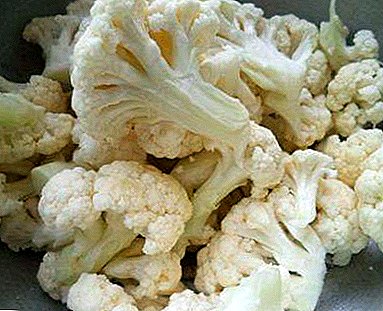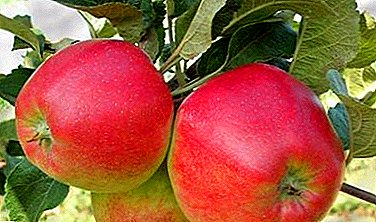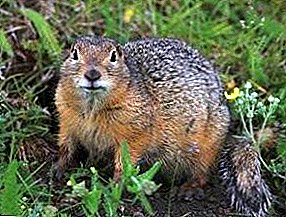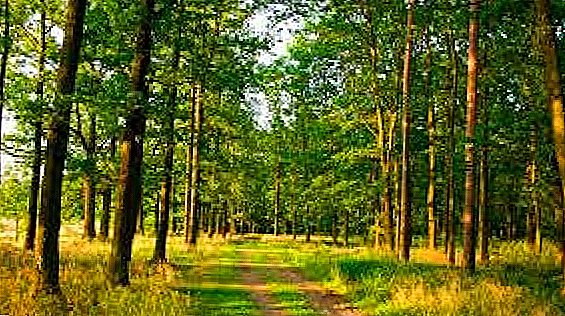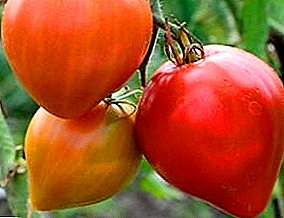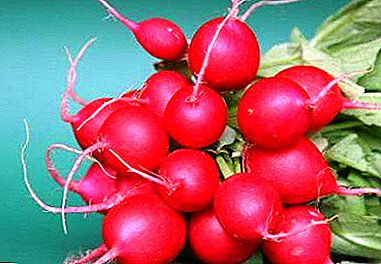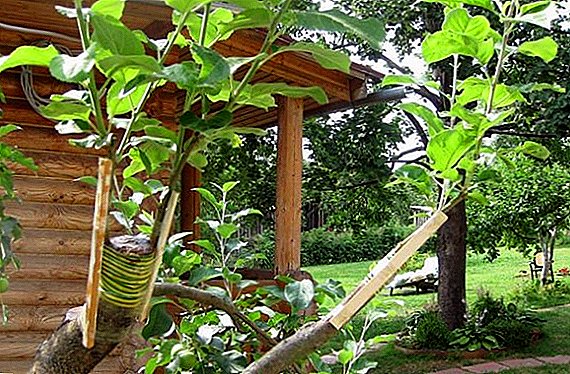
One of the oldest Italian breeds of chickens should be attributed breed Polverara. These birds belong to the meat-and-egg type of productivity.
However, they attracted farmers not only with tasty meat and a large number of eggs, but also with an unusual crest structure and a small tuft.
The first written mention of the breed Polverara dated 1400 year. Historians of the time indicated that in the small town of Polverara, unusual crested chickens appeared, having high meat and egg productivity.
Unfortunately, it is almost impossible to establish exactly which breeds took part during the crossing.
Breeders suggest that aboriginal Italian and French chickens were used to breed such a breed.
More recently, domestic chickens have found common signs in Polverar and Padua chickens. It is quite possible that the most productive "Paduans" were selected for breeding, and they were able to give the new breed such outstanding at that time.
Description of breed Polverara
 Polverarah almost always have a white color plumage.
Polverarah almost always have a white color plumage.
In itself, it is very smooth and dense, which allows chickens to tolerate any bad weather. The rooster of this breed has a strong folded body, which has a rectangular shape. However, his body looks somewhat rounded due to the presence of abundant plumage, hiding the shape of a bird.
The neck is rather long, but there is no long plumage on it that falls on the shoulders. Gradually, the rooster's neck goes into the back, which is at a barely noticeable angle. The shoulders are narrow, the wings are tightly pressed to the body. At the ends of the wings falls long lumbar plumage.
Roosters of the Polverara breed have a small, highly set tail. On it grow small rounded braids, which are also painted white. The chest is set deep, but not wide enough. At the same time the belly of the breed is large, but pulled in by roosters.
The head of a rooster is small. On the red face of the bird grows short white plumage. Crest at breed is absent. Instead, on the head of a rooster grow small and branched "horns."
Earrings are short, almost imperceptible, scarlet. Ear lobes are painted white. The eyes are red or orange-red. The beak is strong, light. Its tip is slightly rounded at the end.
 Chickens Shaver White and Shaver Brown differ only in the color of their plumage. In their production characteristics they are the same.
Chickens Shaver White and Shaver Brown differ only in the color of their plumage. In their production characteristics they are the same.All the subtlety of feeding young chickens read here: //selo.guru/ptitsa/kury/kormlenie/molodnyak.html.
The shins of the Polverara breed are clearly visible, as the legs of this bird are rather long. As a rule, they are painted in light gray color. Hocks long, elongated fingers wide apart.
Chickens of this breed have a horizontal back. Compared to roosters, they have a more massive belly and larger breasts. The chicken's small tail is set almost straight, forming a small angle with the back of the chicken. A small comb is a red branched "horns".
Features
 Polverarah belong to the meat-egg breeds of chickens, so they are equally good in meat and egg production.
Polverarah belong to the meat-egg breeds of chickens, so they are equally good in meat and egg production.
However, one should take into account the fact that the egg productivity of this breed may not satisfy modern needs. This breed was bred several centuries ago, so it can only lay 150 eggs per year.
As for the quality of meat, it is really on top. Many Italian farmers continue to grow the breed, as there is a demand for the carcasses of these chickens.
Polverarahs are freedom loving birds.. They have long been grown in Italian farmsteads, so the birds do not tolerate cellular content. Chickens breed Polverara need a constant free-range, which will contribute to the formation of normal egg laying.
Good feather cover on the body of the bird allows it to easily tolerate any weather conditions. Polverarah equally well feel in the cold and during the heat. That is why some Russian private breeders are not afraid to keep this breed in their farmsteads.
The young of this breed is especially vulnerable to external factors. The fact is that he too slowly fledged.
At this very moment the chicken can catch a cold and die, which will bring additional losses for the farm. Puberty also does not occur immediately. On average, young chickens begin to breed at the age of 8 months.
Content and cultivation
 Chickens of the Polverara breed should be kept in spacious poultry houses having a yard for walking.
Chickens of the Polverara breed should be kept in spacious poultry houses having a yard for walking.
These chickens have a very lively character, so they need daily walks. Farmers also need to keep in mind that these birds fly pretty well.
They prefer to fling the treeswhere they can sit for a long time, turning over feathers. To prevent the birds from flying away or escaping outside the courtyard, it should be enclosed with a reliable fence. It is also advisable to equip the roof or arrange a walking yard in the garden, where there are thick trees.
Feeding this breed of chickens is virtually no complication. However, they are demanding on the content of the green component in the mash.
Because of this, chopped grass, vegetables and vitamins should always be added to the feed so that the birds can grow normally. Of course, during walking, they themselves may find pasture for themselves, but this is clearly not enough for high-quality feeding of the breed.
For laying hens of breed Polverara, you can additionally buy feed containing high amounts of calcium. If there are no extra funds for the purchase of such feed, then boiled eggs and crushed shells should be added to ordinary grain masks. Eggs can help laying hens regain protein stores, and crushed shells can help calcium.
Specifications
 The total weight of Polverara roosters can vary from 2.5 to 2.8 kg. Laying hens of this breed can gain a mass of up to 2.1 kg.
The total weight of Polverara roosters can vary from 2.5 to 2.8 kg. Laying hens of this breed can gain a mass of up to 2.1 kg.
They lay on average up to 130-150 eggs per year. On average, each egg with a white shell can reach a mass of 40 g. For incubation, only the largest specimens should be selected.
The productivity of the breed lasts up to 3-4 years. After that, there is a sharp decline in strength and aging of all individuals. Some of them can develop cerebral hernia, which is practically not treatable.
Analogs
 The same unusual "horns" instead of the ridge are in the breed La Flush.
The same unusual "horns" instead of the ridge are in the breed La Flush.
This breed was bred by French farmers several centuries ago, so it is considered quite old. These chickens are characterized by high quality meat and a good level of egg production. However, they are gradually being supplanted by more productive analogues.
Another rare breed with "horns" is Appenzeller. They were bred by Swiss farmers who lived in remote mountainous regions of the country, so for a long time no one knew about the existence of the breed.
Now these chickens remain as rare as their livestock is constantly declining, requiring the immediate intervention of breeders.
Conclusion
The Italian hens of Polverara are the best source of quality meat and small eggs. These are not quite ordinary chickens, since instead of a crest they have short red "horns" and a small crest.
But breeders are attracted not so much by the productivity of chickens and their appearance, as their rarity. Now in the world there are about 2000 chickens breed Polverara.


